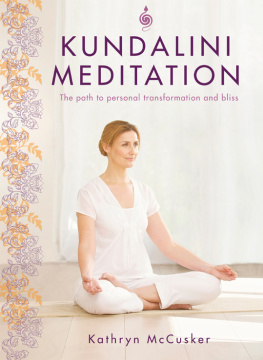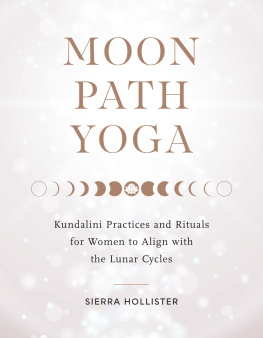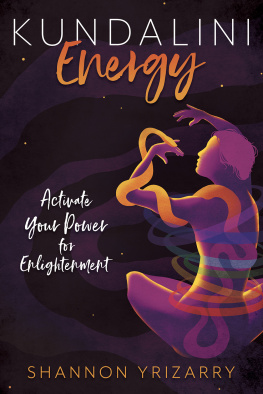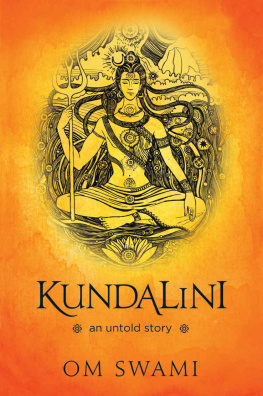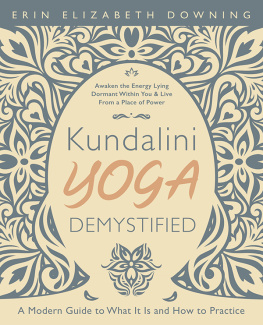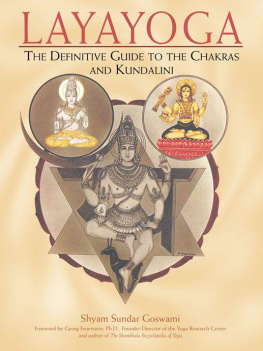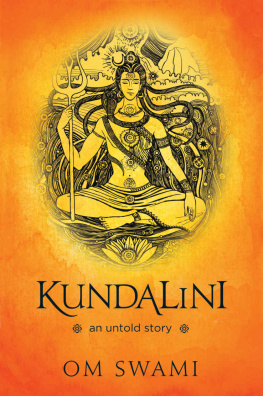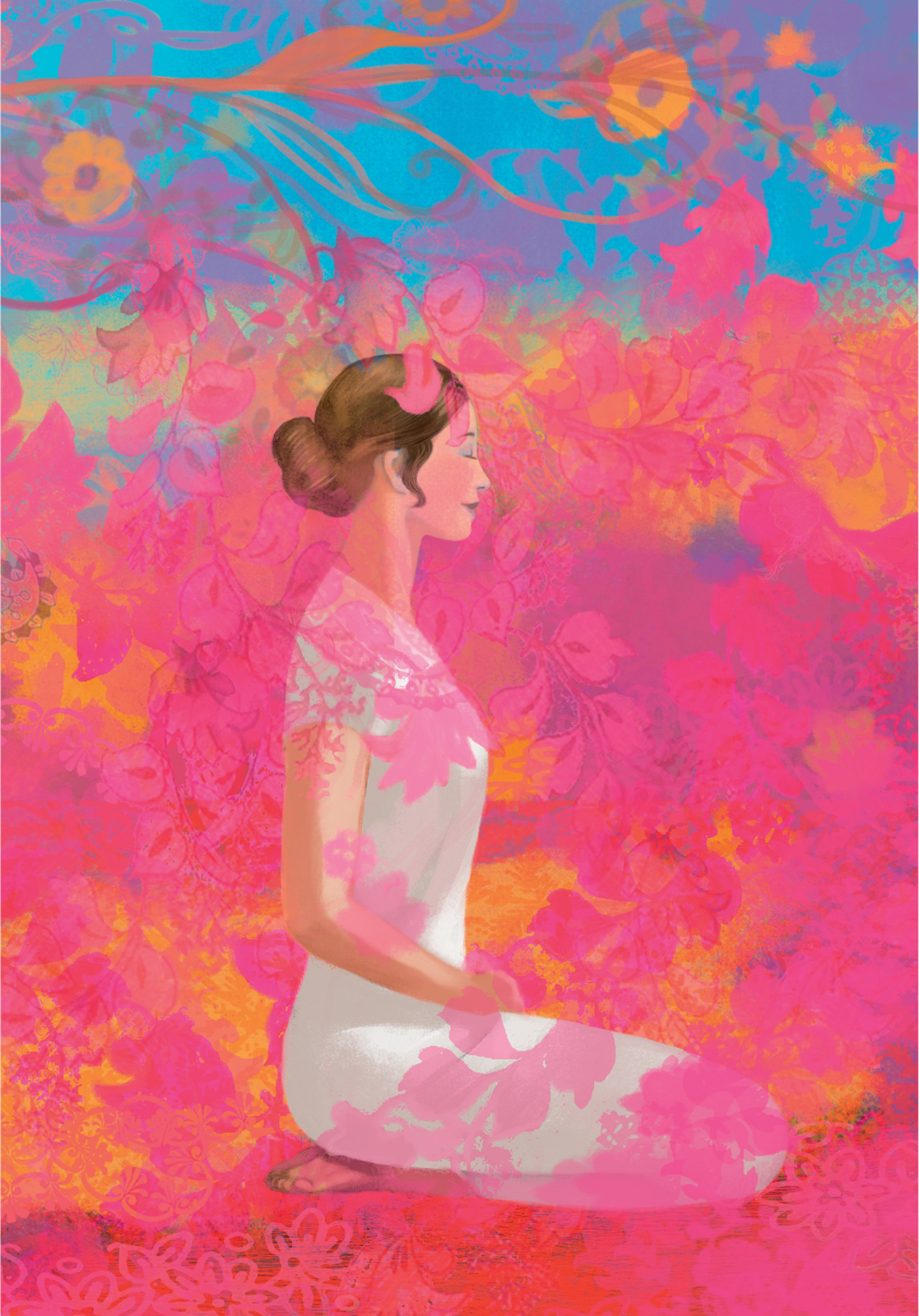KUNDALINI
MEDITATION
The path to personal transformation and creativity
Kathryn McCusker

This book is dedicated to Yogi Bhajan, whose tireless commitment to sharing the teachings of Kundalini yoga has inspired so many people around the world.
Contents
Acknowledgments
Author acknowledgments
I have encountered many wonderful people on my travels and through my passion for music and yoga. All of them have either inspired and supported me in my professional life or have somehow influenced and shaped my growth and awareness. I would like to take this opportunity to thank them all for contributing to my life and so enriching the vision for this book.
Special thanks go to: my publisher Duncan Baird for having the confidence in me to explore a book about Kundalini meditation; my editors, Sandra Rigby and Fiona Robertson, for their unswerving patience and understanding throughout the process; my teachers, especially Karta Singh, who awakened my curiosity and opened my eyes to a fresh and creative way of interpreting Kundalini; and my students and colleagues for their trust and support, in particular those whose stories have been included in this book.
Finally, love and gratitude go to my husband Paul for his unconditional support and understanding from the beginning to the end.
SAT NAM
Picture acknowledgments
The publisher would like to thank the following people, museums and photographic libraries for permission to reproduce their material. Every care has been taken to trace copyright holders. However, if we have omitted anyone we apologize and will, if informed, make corrections to any future edition.
Page 19 Gerolf Kalt/Corbis; R. u. S. Michaud/akg-images; Victoria and Albert Museum, London; Hal Beral/Visuals Unlimited/Corbis; Thierry Ollivier/Muse Guimet, Paris/(C) RMN; Dreamstime; British Library/The Art Archive; R. u. S. Michaud/akg-images; Radius Images/Alamy; Monique Pietri/akg-images; Dr. Neil Overy/Stockfood; Vaclav Volrab/Shutterstock; Dreamstime; Chris Knorr/Design Pics/Corbis; The Trustees of the British Museum; R. u. S. Michaud/akg-images; Hany Maurice Photo/Getty Images; Philippe Sainte-Laudy Photography/Getty Images; Ian Cumming/Axiom; Museum of Fine Arts, Houston, Texas/Gift of Carol & Robert Straus/The Bridgeman Art Library; Dreamstime; Science Museum/Science & Society Picture Library/Getty Images; Arthur Morris/Getty Images; Yuji Higashida/Getty Images; Private Collection/Ann & Bury Peerless Picture Library/The Bridgeman Art Library.
Introduction to Kundalini
K undalini. This ancient Sanskrit term may conjure up for you all kinds of images and ideas. Mysticism, secrecy, ritual, perhaps even the attainment of bliss or enlightenment. But what exactly is Kundalini? Kundalini practices have been misunderstood for decades in the West, but recently increasing numbers of people have been discovering the benefits of the tradition. Kundalini yoga emerged from the meditative practices of ancient Hindu India, possibly as long as 4,000 years ago, and incorporates a focus on the chakras (the energy centres of the subtle body, see pages ), movement, breathing exercises and chanting. Today, ordinary people are rediscovering Kundalini as a tool to relieve stress, to promote both physical and emotional healing, and ultimately to connect with a profound and transforming spirituality. Kundalini truly has become accessible to everyone.
My own path to Kundalini has been a little unusual. For most of my career I have performed around the world as a professional opera singer. Early on I discovered yoga as a tool to help calm and centre me in the midst of the demands of my singing career. But my first experience of Kundalini took me way beyond the benefits of the type of yoga I had been practising up to that point. I was on a yoga retreat in Chichn Itz, Mexico, burnt out after a hectic schedule of singing and touring. Intrigued by a form of yoga I knew nothing about, I signed up for a Kundalini class. Deep down I was searching for some inner peace, balance and a greater sense of connectedness through both mind and body. This initial encounter with Kundalini was a very powerful one and I realized during that first class that I had found what I was looking for.
Of course, I didnt immediately surrender my feelings of fear, resistance and doubt about this very different form of practice. However, once I tuned in to the techniques of Kundalini I found a new way of being. The beauty of Kundalini is that it takes you beyond the confusion and clutter of daily life to a place where you experience a sense of real freedom and stillness. At this point the neutral, meditative mind can allow access to inspiration, excitement and new possibilities. Your mind frees itself of the repetitive dialogue of negative voices and confused thoughts the ancient echoes of the past. The new, raised energetic frequency at which your mind is operating allows you to listen to your minds authentic voice, the voice of your dreams, passions and purpose. In this neutral space we can accept who we are and embrace all that we are the light and the shadows, the good and the bad in us.

This Kundalini pose, known as the Ego Eradicator, helps us to disengage from our mental chatter and achieve a meditative mind.
Today, most people avoid being with their minds in silence. It can seem at the same time both terrifying and lonely. We avoid this experience by distracting ourselves with external stimuli and busy-ness, to prevent ourselves from going within and developing a conscious relationship with our mind. This helps to create an illusion of feeling safe and in control. But it is in the quiet, still moments that we have the potential to off-load the constant chatter and come to a point of peace.
The word Kundalini literally means the coil in the hair of the beloved, and symbolizes the uncoiling of the creative energy that lies dormant at the base of the spine. The image that is often used to describe this energy is of a coiled serpent sleeping. Once we awaken Kundalini energy, we raise our energetic vibration to release stress and allow our mind to come back to peace and balance.
Kundalini meditation combines powerful and effective techniques such as breathing, mudras (hand gestures) and mantras (sacred sounds) to accelerate this process toward a neutral, meditative mind. It is an extraordinarily powerful practice that we can all integrate into our everyday lives. Even if you have only a short amount of time to practise in your day, one Kundalini meditation can bring about real transformation.
In .
Be patient with yourself, as sometimes the benefits of Kundalini meditation arent obvious straightaway. Keep going and you will eventually notice the changes in ways both subtle and profound. If you are consistent with your practice, you will clear away negative subconscious patterns, replace them with new positive patterns, and transform your life!
Yogi Bhajan A Visionary
T here are different paths to Kundalini. My path was through the teachings of Yogi Bhajan, who brought Kundalini yoga and meditation to the West in 1969. Before that, the techniques of Kundalini as practised in India and Tibet were closely guarded, passed down from master to student.

